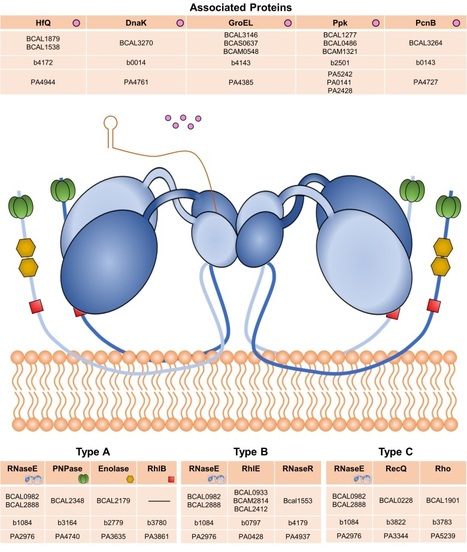
RNA-binding proteins (RBPs) are important regulators of cellular functions, playing critical roles on the survival of bacteria and in the case of pathogens, on their interaction with the host. RBPs are involved in transcriptional, post-transcriptional, and translational processes. However, except for model organisms like Escherichia coli, there is little information about the identification or characterization of RBPs in other bacteria, namely in members of the Burkholderia cepacia complex (Bcc). Bcc is a group of bacterial species associated with a poor clinical prognosis in cystic fibrosis patients. These species have some of the largest bacterial genomes, and except for the presence of two-distinct Hfq-like proteins, their RBP repertoire has not been analyzed so far. Using in silico approaches, we identified 186 conventional putative RBPs in Burkholderia cenocepacia J2315, an epidemic and multidrug resistant pathogen of cystic fibrosis patients. In a work recently published in the journal GENES, Joana Feliciano, António Seixas, Tiago Pita and Jorge H. Leitão described the comparative genomics and phylogenetic analysis of RBPs present in multiple copies and predicted to play a role in transcription, protein synthesis, and RNA decay in Bcc bacteria. The analysis suggest the existence, in B. cenocepacia and in other Bcc bacteria, of some extra and unexplored functions for the mentioned RBPs, as well as of alternative mechanisms involved in RNA regulation and metabolism in these bacteria.



 Your new post is loading...
Your new post is loading...






